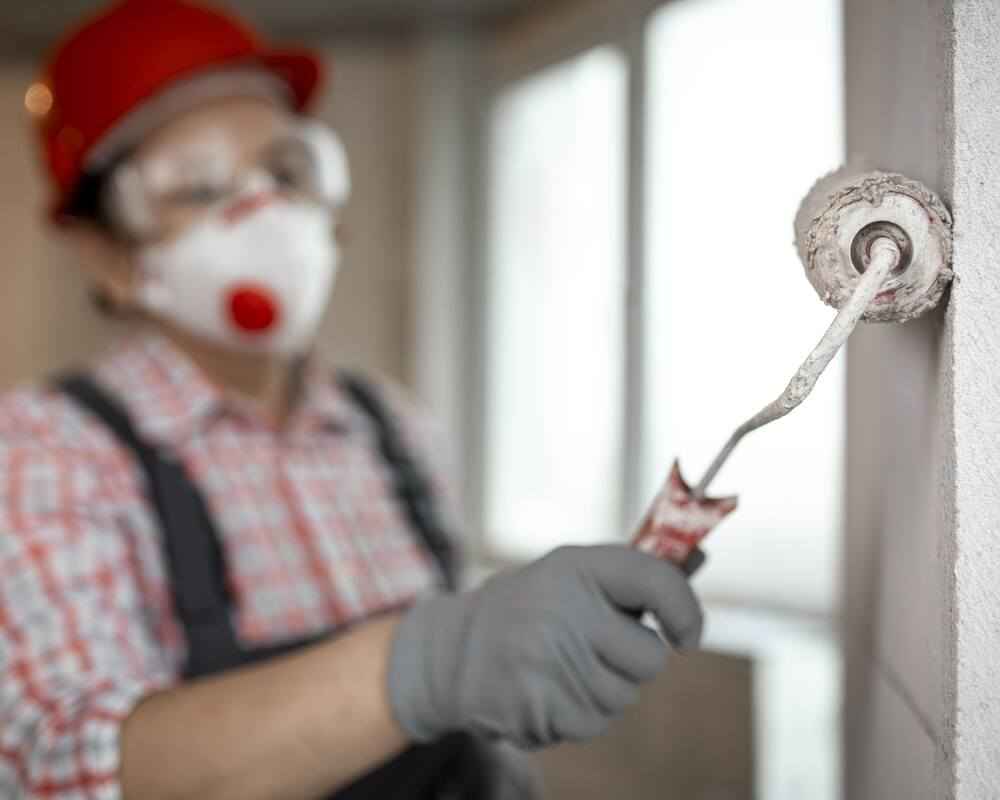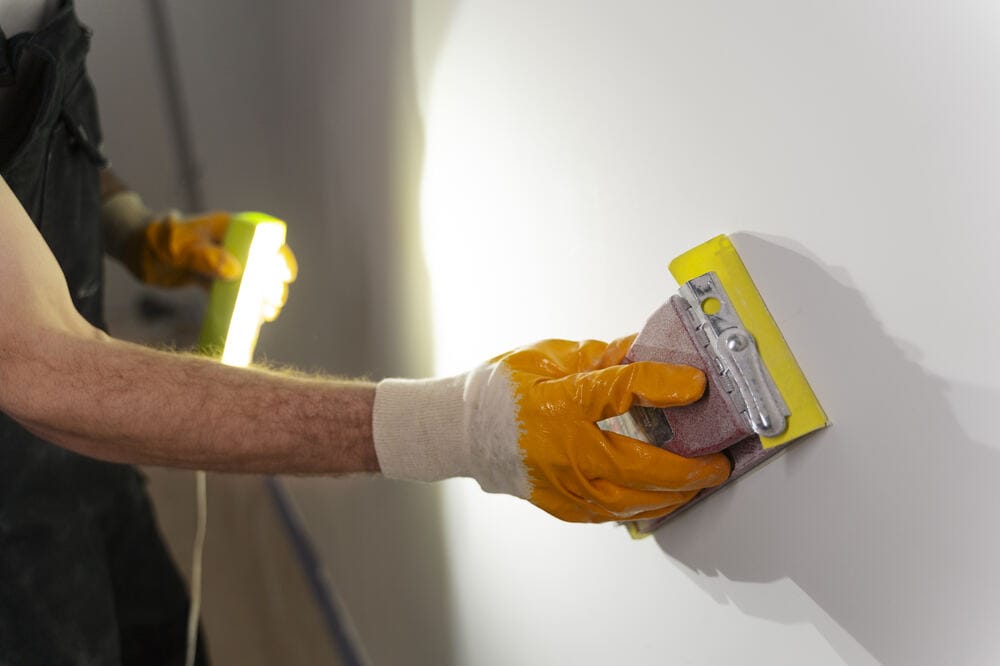
Top 3 Painting Trends Professional House Painters Are Loving Right Now!
The painting industry is evolving, with professional house painters embracing trends that enhance style, mood, and property value. From homes to businesses, fresh colors, bold accents, and textured finishes are transforming interiors and exteriors. As demand for high-quality residential painting services and commercial painting services grows, licensed painting contractors bring expertise and precision to every project.
These top three trends are redefining modern spaces with depth, personality, and lasting appeal.
Table of Contents
Key Takeaways✔ Earthy, nature-inspired colors like deep greens and warm browns are popular for creating a grounded, sophisticated look in homes and businesses. ✔ Bold accent walls and statement ceilings add personality and depth without overwhelming a space. ✔ Textured finishes such as Venetian plaster and limewash create a high-end, custom appearance with added dimension. ✔ Choosing the right paint finish—matte, eggshell, satin, semi-gloss, or high-gloss—affects durability, maintenance, and overall aesthetic. ✔ Proper surface preparation, including cleaning, sanding, and priming, ensures a long-lasting, professional-quality paint job. ✔ Seasonal factors like temperature and humidity impact when and how exterior painting should be done for best results. ✔ Hiring licensed painting contractors guarantees expert application, high-quality materials, and a flawless finish that lasts. |
1. Earthy and Nature-Inspired Colors
Home and business owners are embracing colors that create a warm, natural atmosphere. Shades inspired by nature—like deep greens, warm browns, and muted blues—bring a sense of calm and sophistication to any space. Professional house painters are seeing a rise in demand for these tones in both residential painting services and commercial painting services, as they blend beautifully with modern and traditional designs.
Why Earthy Colors Are Gaining Popularity
- They Create a Relaxing Environment: Soft greens, warm taupes, and sandy beiges mimic natural landscapes, making interiors feel peaceful. Many businesses, including spas and cafés, use these tones to create a welcoming atmosphere that encourages relaxation.
- They Pair Well with Modern and Classic Designs: Earthy colors complement a wide range of architectural styles, from sleek, contemporary homes to historic buildings. Licensed painting contractors often recommend these shades for exterior projects because they blend seamlessly with surrounding landscapes.
- They Enhance Natural Lighting: Lighter earth tones, like soft terracotta and pale sage, reflect natural light and make spaces feel brighter. This is especially beneficial in homes and offices where a well-lit environment boosts productivity and comfort.
How Professional House Painters Apply This Trend
- They Use Matte and Satin Finishes for a Natural Look: Matte finishes create a soft, organic feel, while satin adds a slight sheen that enhances depth. Professional house painters suggest these finishes in high-traffic areas to maintain durability without compromising aesthetics.
- They Incorporate Layering Techniques for Dimension: By blending two similar earthy tones, painters add subtle depth and richness to walls. This technique is popular in residential painting services for creating cozy yet elegant living spaces.
- They Select Low-VOC Paints for Health and Sustainability: Many licensed painting contractors choose eco-friendly paints that improve indoor air quality. These products reduce harmful emissions, making them ideal for homes, offices, and commercial spaces focused on sustainability.
2. Bold Accent Walls and Statement Ceilings
More homeowners and business owners are stepping away from all-neutral interiors and embracing bold, eye-catching focal points. Rich colors, dramatic patterns, and high-contrast designs turn walls and ceilings into statement features that add personality and sophistication. Professional house painters are using this trend to help clients create modern, high-impact interiors in both residential painting services and commercial painting services.
Why Bold Accents Are Gaining Popularity
- They Add Personality Without Overwhelming a Space: Instead of painting an entire room in a deep or bright color, licensed painting contractors use bold hues strategically on one wall or the ceiling. This creates a striking visual effect while keeping the rest of the space balanced and cohesive.
- They Highlight Architectural Features: Bold colors emphasize details like tray ceilings, alcoves, or built-in bookshelves. Many professional house painters recommend deep navy, emerald green, or charcoal gray to draw attention to these design elements in high-end homes and commercial spaces.
- They Make Large Rooms Feel More Intimate: In open-concept layouts, dark accent walls or painted ceilings help define different areas and create a sense of structure. Commercial painting services often use this technique in hotel lobbies and restaurants to establish a cozy yet dramatic atmosphere.
How Professional House Painters Apply This Trend
- They Use High-Contrast Colors for a Striking Look: Instead of soft, blended tones, professional house painters opt for bold contrasts like black and white or deep jewel tones against light neutrals. This sharp difference enhances the depth and impact of the accent feature.
- They Experiment with Unique Ceiling Finishes: Instead of leaving ceilings plain, licensed painting contractors introduce color, texture, or geometric patterns to add dimension. Metallic finishes, dark hues, or coffered ceiling accents are common in upscale residential painting services and luxury commercial painting services.
- They Incorporate Murals and Custom Artwork: Many businesses use hand-painted designs or geometric patterns to personalize their space. Commercial painting services often collaborate with mural artists to create unique branding walls that leave a lasting impression on customers.
3. Textured Finishes for a Luxurious Look
Flat, one-dimensional walls are becoming less common as homeowners and business owners look for ways to add texture and visual depth. Techniques like Venetian plaster, limewash, and brushed suede finishes create a high-end, custom appearance. Professional house painters are using these methods in both residential painting services and commercial painting services to elevate spaces with an elegant, handcrafted touch.
Why Textured Finishes Are Gaining Popularity
- They Add Depth and Sophistication: Unlike standard paint, textured finishes catch the light differently and create an upscale, layered effect. Licensed painting contractors often use Venetian plaster in high-end homes and boutique hotels to achieve a polished yet artistic look.
- They Work Well in Minimalist and Modern Designs: Even in simple, neutral spaces, textured walls prevent interiors from looking flat or dull. Many professional house painters recommend subtle limewash techniques for homeowners who want visual interest without bold colors or patterns.
- They Help Hide Surface Imperfections: Textured finishes are especially useful for older buildings with uneven drywall or minor wall flaws. Commercial painting services frequently use these techniques in historic renovations to maintain character while refreshing the space.
How Professional House Painters Apply This Trend
- They Use Troweling Techniques for a Layered Effect: Instead of applying paint with a standard roller, licensed painting contractors use specialty trowels to spread plaster or textured coatings. This creates depth and movement, making each application unique.
- They Blend Multiple Shades for a Natural Variation: Unlike traditional flat paint, textured finishes often use a mix of complementary colors for a multi-dimensional appearance. Professional house painters apply these layers carefully to ensure a smooth, organic transition between tones.
- They Seal and Protect the Finish for Longevity: Textured walls require specific topcoats to prevent wear and staining. In commercial painting services, high-traffic areas like hotel lobbies and office reception spaces receive protective sealants to maintain their luxurious look for years.
How to Select the Best Paint Finish for Every Room
Choosing the right paint finish is just as important as selecting the perfect color. The finish affects durability, maintenance, and how the paint reflects light, which can change the entire feel of a room. Professional house painters consider factors like foot traffic, moisture levels, and lighting when recommending finishes for residential painting services and commercial painting services, a demand that continues to grow as the global house painting services market is expected to reach US$ 29.6 billion by 2033.
1. Flat and Matte Finishes for a Soft, Modern Look
Flat and matte finishes create a smooth, non-reflective surface that works well in low-traffic areas. These finishes provide excellent coverage and help hide minor wall imperfections, making them ideal for bedrooms, ceilings, and formal living rooms. Licensed painting contractors often recommend flat paint for walls that won’t be touched often since it’s harder to clean than other finishes.
2. Eggshell Finish for a Subtle Sheen and Durability
Eggshell finishes have a slight sheen that adds depth without being too glossy. This finish is more washable than matte paint, making it a popular choice for living rooms, dining rooms, and hallways. Professional house painters prefer eggshell for spaces that need a balance between durability and aesthetics in residential painting services.
3. Satin Finish for High-Traffic Areas
Satin paint is known for its soft shine and high durability, making it perfect for busy areas like kitchens, bathrooms, and children’s rooms. It resists moisture and stains better than eggshell, allowing for easier cleaning without losing its smooth look. Commercial painting services often use satin finishes in offices and retail spaces because they hold up well under daily wear and tear.
4. Semi-Gloss Finish for Moisture-Prone Spaces
Semi-gloss finishes are highly resistant to moisture and stains, making them the best choice for kitchens, bathrooms, laundry rooms, and trim work. The shinier surface reflects light, brightening up small or dark spaces while providing superior durability. Licensed painting contractors often apply semi-gloss to doors and baseboards because it withstands frequent cleaning and resists scuffs.
5. High-Gloss Finish for Bold Accents and Easy Maintenance
High-gloss paint has the most shine and is the most durable, making it ideal for cabinets, furniture, and decorative trim. Its reflective quality adds a polished, modern look but requires careful application since it highlights surface imperfections. Professional house painters use high-gloss finishes sparingly in residential painting services and commercial painting services to create eye-catching details with a sleek, sophisticated appearance.
How to Prepare a Surface for a Flawless Paint Job
Proper surface preparation is the foundation of a smooth, long-lasting paint finish. Skipping prep work can lead to peeling, uneven coverage, or poor adhesion, making even high-quality paint look unprofessional. Professional house painters follow a thorough process in both residential painting services and commercial painting services to ensure walls, ceilings, and exteriors are ready for a perfect application.
1. Clean the Surface to Remove Dirt and Grease
Dirt, dust, and grease prevent paint from sticking properly, leading to patchy coverage, driving demand for advanced solutions as the global antimicrobial coatings market grows at an annual rate of 13.9% from 2024 to 2030. Licensed painting contractors wash walls with mild soap and water for interior projects, while exteriors may require power washing to remove buildup. In kitchens and bathrooms, degreasing cleaners are necessary to break down stubborn residue before painting.
2. Repair Cracks, Holes, and Surface Damage
Filling in imperfections ensures a smooth, even finish once the paint is applied. Professional house painters use spackle or wood filler to patch holes and sand the area once it dries for a seamless blend. For larger cracks or peeling paint, scraping and reapplying joint compound is essential to create a solid surface.
3. Sand for a Smooth, Even Texture
Sanding rough areas improves paint adhesion and prevents an uneven finish, especially on previously painted surfaces. Licensed painting contractors use fine-grit sandpaper on walls and medium-grit for wood trim to remove old gloss and create a slightly rough texture. This step is particularly important in commercial painting services, where high-traffic areas need a durable, professional look.
4. Apply the Right Primer for Better Adhesion
Primer helps the paint bond to the surface, evens out color variations, and increases durability. Professional house painters choose primers based on the surface type—stain-blocking primers for water-damaged walls, bonding primers for glossy surfaces, and masonry primers for brick or concrete. This step is especially critical in residential painting services, where walls may have previous coatings or uneven tones.
5. Protect Surrounding Areas to Avoid Messes
Using painter’s tape, drop cloths, and plastic sheeting prevents paint from splattering onto floors, furniture, or trim. Licensed painting contractors carefully mask off baseboards, windows, and door frames to ensure crisp, clean lines. In commercial painting services, this step is crucial for protecting expensive fixtures, office equipment, and flooring from accidental spills.
Frequently Asked Questions
1. How often should interior walls be repainted?
The frequency of repainting depends on the room’s usage, lighting, and overall wear and tear. High-traffic areas like hallways, kitchens, and children’s rooms typically need a fresh coat every 3 to 5 years, while bedrooms and formal living rooms can go 5 to 7 years without repainting. Professional house painters recommend using high-quality, washable paints in residential painting services to extend the lifespan of interior walls. In commercial painting services, offices and retail spaces may require touch-ups more frequently to maintain a clean, polished look.
2. What is the best time of year to paint a house exterior?
Mild, dry weather is ideal for exterior painting to ensure proper drying and adhesion. Licensed painting contractors suggest painting in spring or early fall when temperatures are between 50°F and 85°F, avoiding extreme heat or cold. Humidity can also affect drying time, so it’s best to schedule residential painting services or commercial painting services during periods of low moisture. Choosing the right season prevents peeling, cracking, and uneven finishes caused by weather conditions.
3. How can you prevent paint from fading over time?
Fading is often caused by direct sunlight, poor-quality paint, or exposure to harsh weather conditions. Professional house painters recommend using UV-resistant, high-quality exterior paints to maintain color vibrancy for longer periods. Applying a clear protective topcoat can also add an extra layer of defense against fading, especially in commercial painting services where buildings are exposed to constant sun. Regular cleaning and maintenance, such as removing dirt and mildew buildup, help preserve painted surfaces.
4. Can dark colors make a room look smaller?
Dark colors can create a more intimate and cozy feel but may make small spaces feel even smaller if not used strategically. Licensed painting contractors suggest balancing dark walls with lighter ceilings, trim, and furniture to keep the room from feeling closed in. In residential painting services, accent walls in deep shades can add depth without overwhelming a space. In commercial painting services, dark colors are often used in contrast with metallic finishes or bright décor to create a sophisticated, modern look.
5. What should be done to maintain freshly painted walls?
To keep walls looking fresh, avoid scrubbing them for at least two weeks after painting to allow the paint to fully cure. Professional house painters recommend using a damp microfiber cloth and mild soap to clean dirt or stains without damaging the finish. High-traffic areas in residential painting services can benefit from periodic touch-ups using leftover paint for a seamless blend. In commercial painting services, applying a protective sealant can help walls resist scuffs, fingerprints, and general wear over time.
Choose Expert Painting Services by Westport’s Top Professionals
Enhance the beauty and longevity of your home or business with the skilled team at Westport Professional House Painters in Westport, CT. Specializing in residential painting services and commercial painting services, they bring precision, durability, and a fresh perspective to every project. Their licensed painting contractors handle everything from meticulous prep work to flawless finishes, ensuring results that stand the test of time.
Elevate your space with premium craftsmanship—schedule a consultation with Westport Professional House Painters today!


